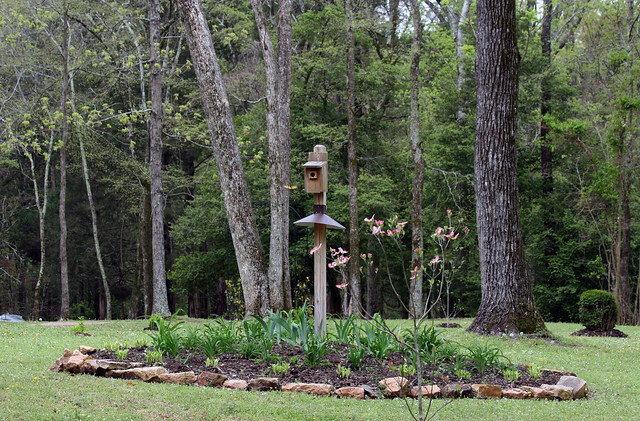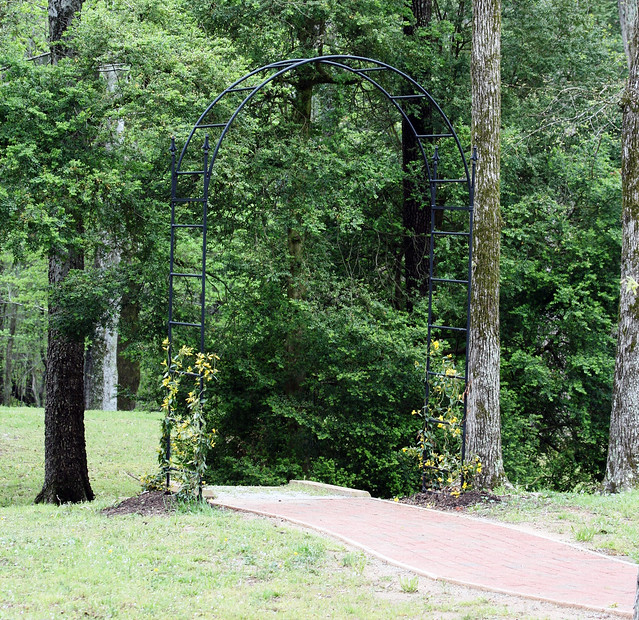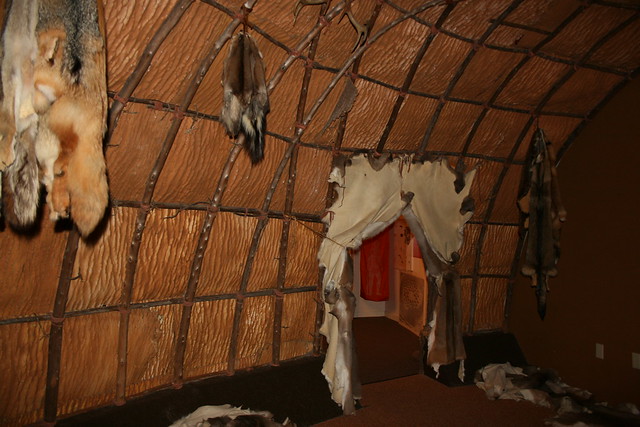Read Our Blogs
The Occaneechi Story
As I walk along the Mossey Creek Trail at Occoneechee State Park, it’s easy to imagine I am living in a time long ago, way before our lives became overloaded with electronic devices and other modern inventions.

Along the Mossey Creek trail
I can pretend that I am one of the Occaneechi, American Indians who made their homes here for possibly thousands of years before European contact. The only sounds I hear are birds chirping, frogs calling, and the trickling water of a meandering stream. An occasional plane flying overhead is the only thing that reminds me of twenty-first century civilization.
On the hill above me lie the Terrace Gardens and the Old Plantation Trail. This trail passes through the remains of Occoneechee Plantation, which thrived here on the banks of the Roanoke River during the nineteenth century. Occoneechee Plantation was the home of William Townes and his family. The main plantation house was a two-story structure with 20 rooms, surrounded by 3100 acres of land.
The Townes plantation would have been largely self-sufficient, with its location on the river providing an avenue for trade. The mansion was destroyed by fire on Christmas Eve 1898, likely caused by candles being used to decorate the family Christmas tree. When the John H. Kerr Dam formed Kerr Reservoir (aka Buggs Island Lake) in the mid-twentieth century, part of the plantation grounds were flooded.

A bluebird house at Occoneechee State Park's Terrace Gardens

A trellis and paved walkway are modern additions to the Terrace Garden
Thanks to the Friends of Occoneechee State Park and other community partners, the gardens have been partially restored. Plantings of day lilies and other trees and flowers provide pleasant surroundings for several bluebird houses. Paved walkways and a trellis provide for a pleasant stroll, with cool shade from tall trees surrounding the garden area. One could easily imagine this as a lovely casual outdoor wedding venue.
The history of this place goes back much further than the nineteenth century, however. The plantation, and in turn the park, are named for the Occaneechi people who lived in this area. An historical marker just outside the park on U.S. 58 tells a part of the story. The marker states that Occaneechi Indians once lived nearby on an island in the Roanoke River. The difference in spellings is probably because of Europeans’ attempt to spell Indian names.

A modern replica of a typical Occaneechi dwelling can be found on the park grounds
According to information from the North Carolina History Project, the first historical reference to the Occaneechi was in 1650, when an English explorer learned that “Occonacheans” lived on a small island in the Roanoke River and farmed cornfields on the north bank. Settlements of the Tutelo and Saponi tribes could be found on neighboring islands. In addition to farming of tobacco and other crops, the Occaneechi are believed to have been heavily involved in the fur trade. They resided along the Great Trading Path, which was a prime location connecting the tribe with settlers and other area tribes, along with the Catawba and Cherokee.
In 1676 the Occaneechi were ambushed and driven out by colonist Nathanial Bacon and English settlers. The tribe then migrated south from Roanoke to the Eno River in modern day Orange County, North Carolina.
By the early 1700s, the Occaneechi had moved north to Fort Christanna in what is now Brunswick County, Virginia. Other tribes, including the Saponi, Tutelo and Meipontsky, also sought protection from the Virginia government at the Fort. Research indicates that these tribes descended from larger Siouan tribes that lived in North Carolina and Virginia during prehistoric times.

Inside a replica of Occaneechi home, in the visitor center

Exhibits with artifacts tell the Occaneechi story
Visitors to Occoneechee State Park can learn about the “The Occaneechi Story” through an exhibit in the park’s visitor center. The story begins in 10,000 – 8,000 B.C. with the Paleo-Indian era, and continues through European contact and beyond. A timeline, artifacts, and a reproduction of an Occaneechi style dwelling, or ati, bring the story alive for visitors of all ages. There is also a reproduction of an Occaneechi style dwelling on the park grounds. Trail names, such as "Tutelo" and "Warrior's Path" pay homage to those who came before.
Today, the Occaneechi Band of the Saponi Nation is a small community located in Alamance County, North Carolina, which serves as “the voice of the Occaneechi Nation.” The tribe is involved in preserving and promoting their history and culture, and pursuing economic development projects.
Now is the perfect time to plan a trip to Occoneechee State Park, where you can walk in the footsteps of those ancient people who came before us. If you listen carefully, you might even hear the beating of a distant drum.
For camping and camping reservations click here.
If you have read the article and have a question, please email nancy.heltman@dcr.virginia.gov.
Search for blogs
By Park
Categories
Cabins
Camping
Fishing
History and Culture
Other
Programs and Events
Trails
Volunteers
Water Fun
Archive
2026
2025
2024
2023
2022
2021
2020
2019
2018
2017
2016
2015
2014
2012













